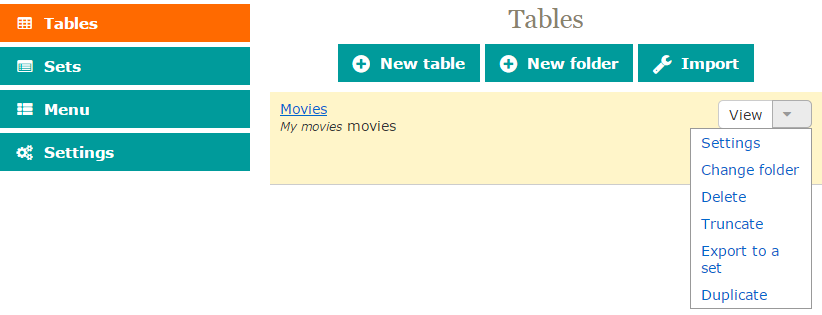Working with tables
Tables form the core of your knowledge base. As a rule, all important information you have can be represented as a list of specific fields. For example, your contacts can be represented as a list of columns: name, e-mail, phone number, Skype, address. You can structure information to work with it the way you feel the most convenient for you.
Let’s review the table menu
New table – create a new table
New folder – Create a new table. Since your database can have many tables, you can arrange them by folders, just like you do on your computer file system. Just like on a PC, you can create nested folders and subfolders unlimitedly. A new table is created in the current folder, but then you can move it to any other place.
Import – Import data to your storage from various sources.
Below the menu there is a list of table and folder in the current folder.

When you click the name of a table, you switch to the view mode where you can view, add, modify and remove records in the current table.
At the right of each table there is a dropdown-menu button:
View – Switches to the view mode. The same as clicking the table’s name.
Settings – Table settings. You can modify the structure of the table, change order and parameters of its fields and so on. You can manage indexes and other settings too.
Change folder – Change the folder. Allows you to move tables to any other folder.
Delete – Removes the table. Be careful! The removed table is unrecoverable!
Truncate – Clears the table. All records in the table are removed, but the structure of the table (columns) remains intact.
Export to a set – Copies the table to a set.
Duplicate – This command creates a copy of the table. You can create a copy of the table with all its contents, or duplicate the structure of the table only. Notice, this command does not make copies of files or images that are stored on the disk, not in the database.


